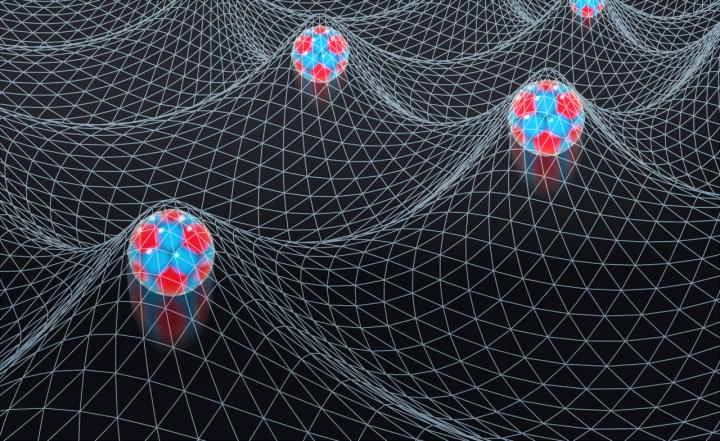Russian and German physicists developed a mathematical model of trapped atoms and ions

Atoms in a trap Credit: Allen Dressen
Atoms can be cooled down using a laser, but it's important to select proper frequency and direction. The same laser can create a so-called trap for cooled down atoms – a standing light wave (i.e. a wave that does not move but fluctuates in one place) keeps the atoms fixed in confined region of space.
This trap can be compared to an egg case that prevents the eggs from moving around. Such a trap can be used as a model system for studying various quantum processes – from solid state physics to high energy physics. However, it is quite difficult to give a detailed mathematical description of the systems that consist of trapped quantum particles.
“The two-body problem (e.g. a hydrogen atom or two colliding atoms) is the basis of quantum mechanics. Each body has three coordinates (X, Y, and Z, just like your Maths teacher told you). In free space this problem may be reduced to relative motion of two particles by separation of their center-of-mass.
The number of variables left in the problem is now three instead of six. The absence of a preferred direction helps reduce this problem to an even simpler one-dimensional radial equation (i.e. an equation with one variable) by separation of angular variables. But when two quantum particles are trapped, an additional condition appears, which is preferential direction.
In this case the problem cannot be reduced to a one-dimensional equation. It becomes two-dimensional if the atoms are identical and six-dimensional if they are distinguishable or if an atom-ionic system is considered. Many scientists are able to solve two-dimensional equations, but three-dimensional ones are already quite a complicated problem for modern numerical mathematics.
This is the area where new methods have to be developed,” said Vladimir Melezhik, the author of the study, the doctor of science in physics and mathematics from RUDN.
Together with physicists from the University of Hamburg Vladimir Melezhik developed a mathematical method reducing multi-dimensional calculations to a system of one-dimensional equations to simplify and speed up the calculations. The authors used it to describe atomic systems with different parameters (intensity of effective interparticle interaction, initial state population, and particle energy).
The method proved to be also applicable to hybrid atom-ionic systems. If not only atoms, but also ions are trapped, new complex quantum effects can be studied. The developed algorithm provides for the calculation of collisions of atoms and ions to each other and the laser trap. In the future such hybrid structures potentially can help to model the elements of quantum computers.
Media Contact
All latest news from the category: Physics and Astronomy
This area deals with the fundamental laws and building blocks of nature and how they interact, the properties and the behavior of matter, and research into space and time and their structures.
innovations-report provides in-depth reports and articles on subjects such as astrophysics, laser technologies, nuclear, quantum, particle and solid-state physics, nanotechnologies, planetary research and findings (Mars, Venus) and developments related to the Hubble Telescope.
Newest articles

High-energy-density aqueous battery based on halogen multi-electron transfer
Traditional non-aqueous lithium-ion batteries have a high energy density, but their safety is compromised due to the flammable organic electrolytes they utilize. Aqueous batteries use water as the solvent for…

First-ever combined heart pump and pig kidney transplant
…gives new hope to patient with terminal illness. Surgeons at NYU Langone Health performed the first-ever combined mechanical heart pump and gene-edited pig kidney transplant surgery in a 54-year-old woman…

Biophysics: Testing how well biomarkers work
LMU researchers have developed a method to determine how reliably target proteins can be labeled using super-resolution fluorescence microscopy. Modern microscopy techniques make it possible to examine the inner workings…





















